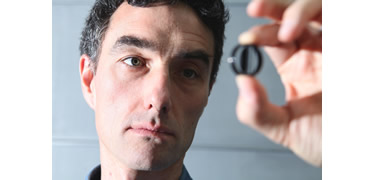-
Courses

Courses
Choosing a course is one of the most important decisions you'll ever make! View our courses and see what our students and lecturers have to say about the courses you are interested in at the links below.
-
University Life

University Life
Each year more than 4,000 choose University of Galway as their University of choice. Find out what life at University of Galway is all about here.
-
About University of Galway

About University of Galway
Since 1845, University of Galway has been sharing the highest quality teaching and research with Ireland and the world. Find out what makes our University so special – from our distinguished history to the latest news and campus developments.
-
Colleges & Schools

Colleges & Schools
University of Galway has earned international recognition as a research-led university with a commitment to top quality teaching across a range of key areas of expertise.
-
Research & Innovation

Research & Innovation
University of Galway’s vibrant research community take on some of the most pressing challenges of our times.
-
Business & Industry

Guiding Breakthrough Research at University of Galway
We explore and facilitate commercial opportunities for the research community at University of Galway, as well as facilitating industry partnership.
-
Alumni & Friends

Alumni & Friends
There are 128,000 University of Galway alumni worldwide. Stay connected to your alumni community! Join our social networks and update your details online.
-
Community Engagement

Community Engagement
At University of Galway, we believe that the best learning takes place when you apply what you learn in a real world context. That's why many of our courses include work placements or community projects.
September 2011 Super-sized Heart Valve Provides Clues to Blood Flow
Super-sized Heart Valve Provides Clues to Blood Flow
Tuesday, 20 September 2011

Researchers at NUI Galway have developed a super-sized model of a heart valve which may lead to a new generation of cardiovsacular devices.
Every year, mechanical valves are inserted into approximately 125,000 patients with heart valve disease around the world. However, the valves can lead to unnatural blood flows, which can trigger a clotting reaction. Because of this, patients with prosthetic heart valves must take medication daily, which can lead to side effects.
The work at NUI Galway is trying to better understand how blood flows through prosthetic valves and in particular through the valve hinges, so that the clotting reaction can be ameliorated. Researchers have developed a working model valve which is six times the size of a normal valve and runs 100 times slower. They use laser light and digital imaging to measure flow accurately and calculate the stresses experienced by blood cells as they move through the valve.
The work has been carried out by Dr Nathan Quinlan and Dr Alessandro Bellofiore of the Biofluid Dynamics group at the National Centre for Biomedical Engineering and Science (NCBES), NUI Galway.
Dr Quinlan, who teaches courses in Mechanical and Biomedical Engineering, explains: “Medicine has been using artificial heart valves, quite successfully, since the 1950s but there is certainly room for improvement. The challenge is to develop a valve which will avoid the thrombotic or clotting reaction. We’ve scaled up and slowed down the flow through the valve – without altering the underlying mechanics – so that we can measure it at very high resolution. We can see very small and short-lived eddies that are only about 10 times larger than blood cells. This is giving us new insights into what damages blood cells and causes dangerous clots.”
The work is an example of the research carried out at the Centre for Biomechanics Research (BMEC) in NUI Galway, which is focused on both fundamental and applied research and where the principles of engineering mechanics and biology are combined to generate discovery and understanding.
Dr Quinlan concluded: “Research like this is crucial in the design and manufacture of new medical devices. The approach we’ve developed could be used not only for heart valves, for any device implanted in large blood vessels. Further down the line, the understanding that comes out of this work can lead to better devices.”
Results from the heart valve model feature in this month’s issue of the Annals of Biomedical Engineering. The group has recently received funding from Science Foundation Ireland’s 2011 Research Frontiers Programme for another project which will build on this work.
ENDS
Keywords:.















